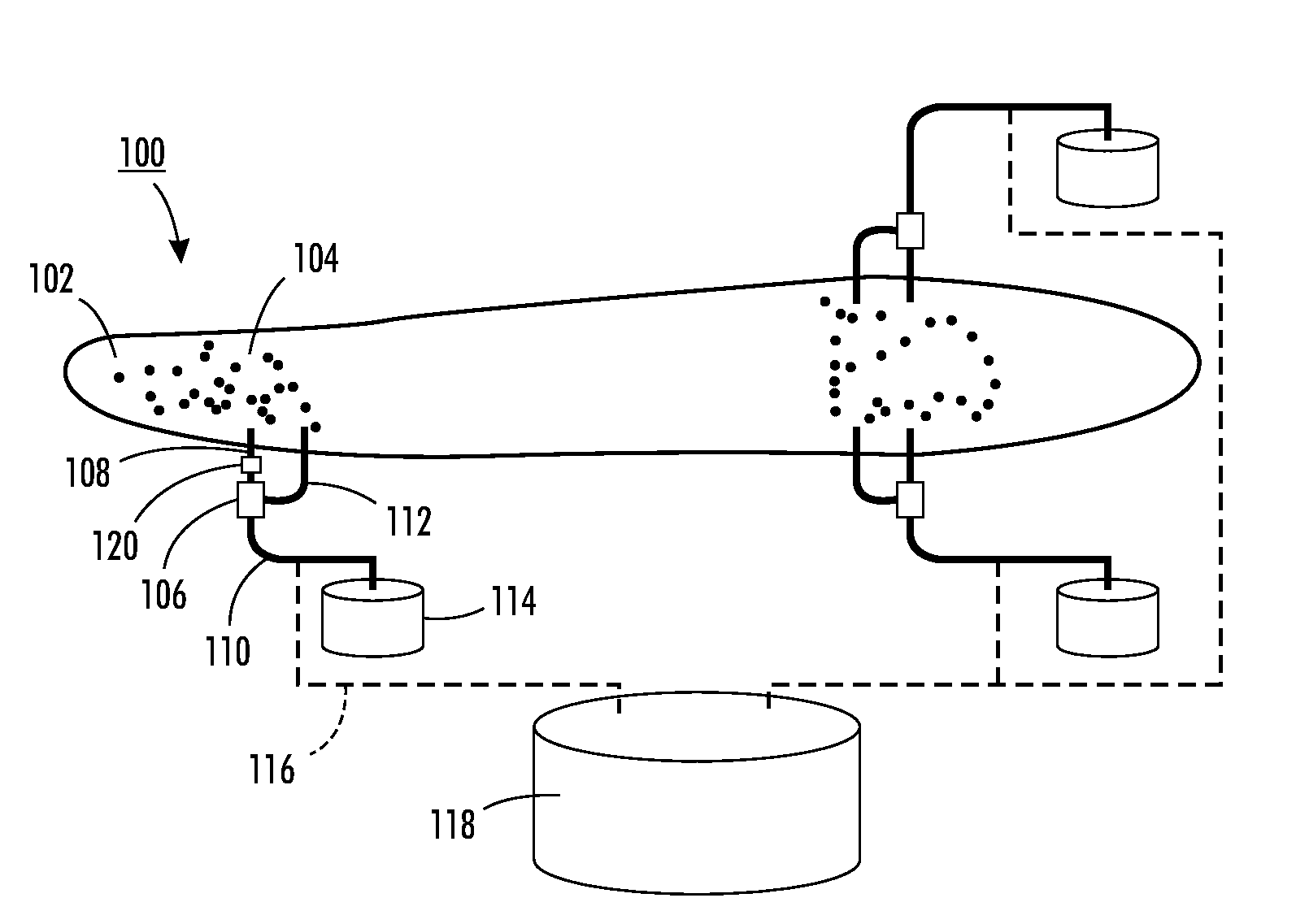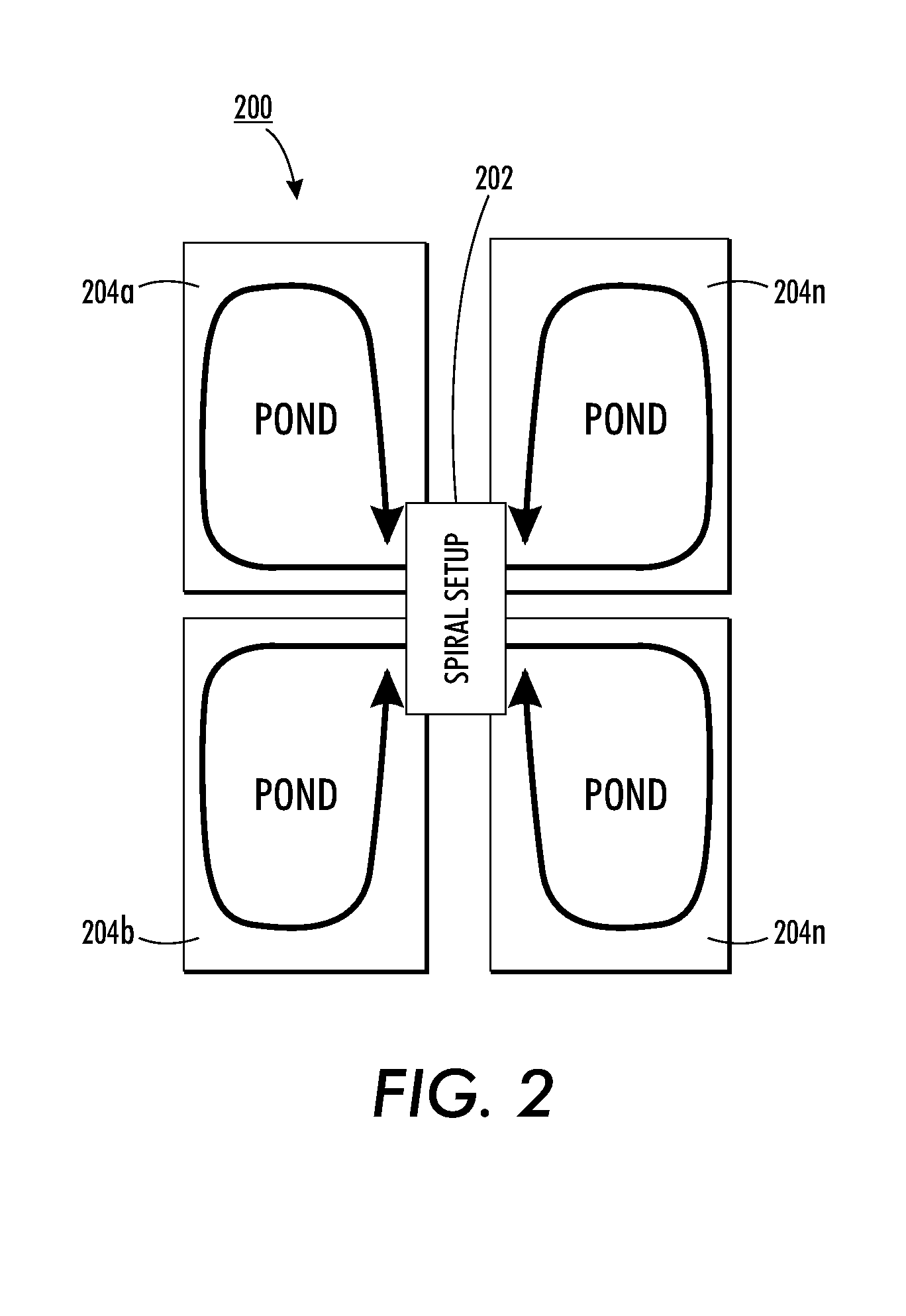Method and apparatus for continuous flow membrane-less algae dewatering
a technology of membraneless algae and continuous flow, which is applied in the direction of biomass after-treatment, agriculture tools and machines, and separation processes, etc., can solve the problems of labor intensive and/or power hungry, the least cost-effective segment of processing is in the dewatering stage, and the difficulty of harvesting algae from lakes and other natural settings
- Summary
- Abstract
- Description
- Claims
- Application Information
AI Technical Summary
Benefits of technology
Problems solved by technology
Method used
Image
Examples
Embodiment Construction
[0036]Illustrated in FIG. 1, is a pond 100 having water 102 with algae 104 suspended therein. Technical and economic problems in algae harvest are largely due to the size, specific gravity and morphology of the algae. A combination of small size (5-15 microns) and specific gravity similar to water (i.e., the neutral buoyancy of the algae) results in a settling rate that is too slow to permit the use of sedimentation as a routine procedure for harvesting the algae cells. Further, in settings where algae exists in (very) low concentrations, there are issues involving handling the large volumes of liquid needed to recover the comparatively small amount of algae.
[0037]Harvesting algae generally involves three steps. The first step, concentration or removal, increases the solid concentration in the form of about 0.02 to 0.04 percent weight to about 1 to 4 percent. The second step is dewatering, which then brings the solids to 8 to 25 percent. Depending on the biofuel recovery process, a ...
PUM
| Property | Measurement | Unit |
|---|---|---|
| size | aaaaa | aaaaa |
| size | aaaaa | aaaaa |
| concentration | aaaaa | aaaaa |
Abstract
Description
Claims
Application Information
 Login to View More
Login to View More - R&D
- Intellectual Property
- Life Sciences
- Materials
- Tech Scout
- Unparalleled Data Quality
- Higher Quality Content
- 60% Fewer Hallucinations
Browse by: Latest US Patents, China's latest patents, Technical Efficacy Thesaurus, Application Domain, Technology Topic, Popular Technical Reports.
© 2025 PatSnap. All rights reserved.Legal|Privacy policy|Modern Slavery Act Transparency Statement|Sitemap|About US| Contact US: help@patsnap.com



